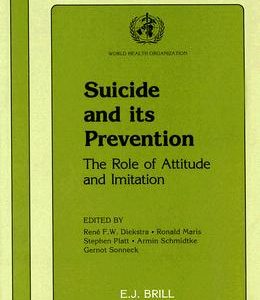Handbook of Intraindividual Variability Across the Life Span
$211.50
Description
Intraindividual variability (IIV) of human development and behavior across the entire life-span is explored in this new book. Leading researchers summarize recent findings on the extent, role, and function of IIV in human development with a focus on how, when, and why individuals change over time. The latest theoretical, methodological, and technological advances are reviewed. The book explores the historical and theoretical background and challenges of IIV research along with its role and function in childhood, adolescence, and adulthood. Edited to maximize consistency and accessibility, each chapter includes an introduction and a review of the research and most explore future directions, new theoretical developments, and conclusions and implications. Readers are shown that by focusing on the individual as a unit of analysis across different time scales, conditions, and situations, researchers can effectively demonstrate behavioral and developmental regularities at different points of the life-span. As such this book is a must have for anybody interested in IIV research.
The book explores:
-New designs and methods for the analysis of intensive repeated measures data.
-The importance of real-time data for more time sensitive and ecologically valid measurements.
-The role and function of intraindividual variability in behavior and development across the life-span — from infancy to later life.
-Numerous examples of how intraindividual variability research is conducted.
-Topics and findings that are commonly treated in disparate bodies of literature from various disciplines.
Part 1 provides a historical, conceptual, and methodological overview of the study of intraindividual variability (IIV). IIV during childhood and adolescence and its application in the investigation of development of language acquisition, infant-parent interactions, development of motor skills, cognitive development, mood regulation, and identity development are examined in Part 2. Part 3 focuses on IIV during adult development, including its use in neuropsychological functioning and attention and in personality development and mood regulation. IIV in the context of adults’ health behavior is also reviewed. Part 4 examines the key issues and challenges of IIV research in human development such as whether IIV in adult development is an indicator of vulnerability or resilience, the association between short-term IIV and long-term developmental change, and multiple time-scale design and analysis. The volume concludes with a look at the future of intraindividual variation analysis.
Intended for advanced students and researchers in developmental psychology across the life-span, social, personality, and health psychology, as well as sociology, family studies, gerontology, education, and medicine, interested in intraindividual variability of behavior and its role in human development, this book also serves as a text for graduate courses on longitudinal analysis, multilevel modeling, and/or (advanced) data analysis offered in these departments. Knowledge in human development or life course sociology and graduate-level statistics is recommended.
Editor: Diehl, Manfred, Editor: Hooker, Karen, Editor: Sliwinski, Martin J
Topic: Psychology
Media: Book
ISBN: 415534860
Language: English
Pages: 392















Reviews
There are no reviews yet.